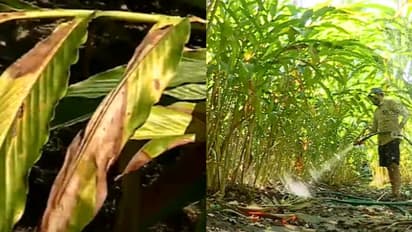Kerala: Cardamom farmers of Idukki in crisis due to rise in temperature

Synopsis
Approximately 30 percent of the area has been impacted by drought, leaving farmers struggling to protect their cardamom plants by watering the plants, using green nets, and creating shade to shield them from harsh weather conditions.
Idukki: The cardamom farmers in Idukki are facing a crisis due to the increased heat in the region, which was previously known for its snow and cold weather. Approximately 30 percent of the area has been impacted by drought, leaving farmers struggling to protect their cardamom plants by watering the plants, using green nets, and creating shade to shield them from harsh weather conditions.
In the cardamom plantations of the High Range, the cardamom pods began to dry up under the intense heat of the sun. To mitigate this, farmers have installed green nets over the cardamom trees to provide shade in areas lacking natural cover. However, around 30 percent of the cardamom trees have already begun to char due to extreme conditions. Each plant requires 20 to 40 liters of water per week, depending on the variety, and any reduction in water supply could result in the plants wilting.
Most people keep cardamom plants from drying out by watering them daily. The irrigation is done by installing sprinklers in large gardens. The ponds in the gardens also started drying up. Timely fertilization and pesticide are also not possible. Due to this, cardamom plants are affected by various types of diseases and pests.
Stay updated with the Breaking News Today and Latest News from across India and around the world. Get real-time updates, in-depth analysis, and comprehensive coverage of India News, World News, Indian Defence News, Kerala News, and Karnataka News. From politics to current affairs, follow every major story as it unfolds. Download the Asianet News Official App to stay informed anytime, anywhere.